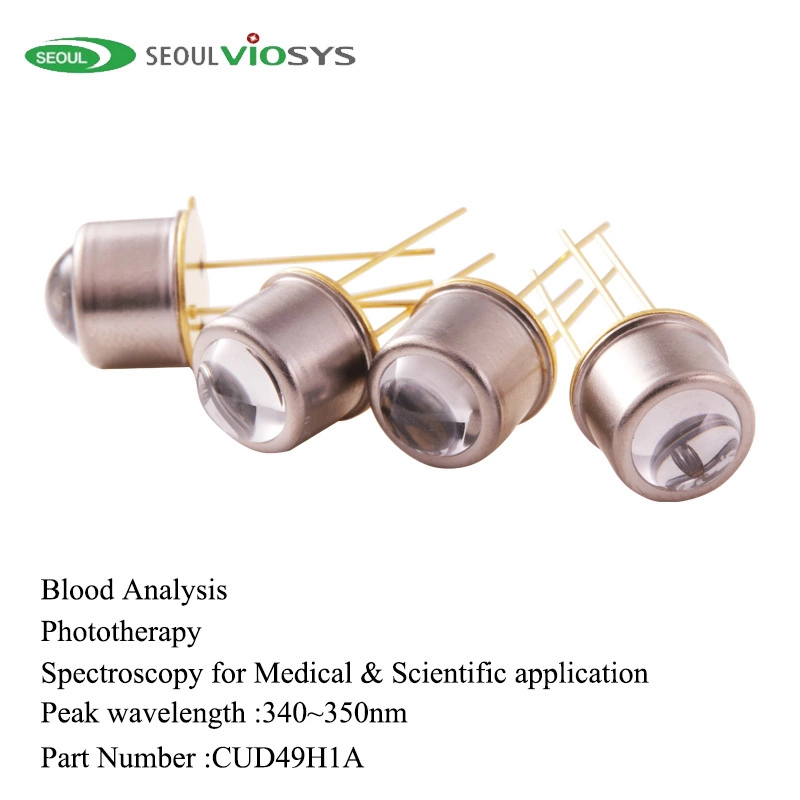Sterilization technologies have become increasingly important in various industries, including healthcare, food processing, and water treatment. One of the most effective and efficient methods of sterilization is the use of ultraviolet (UV) light diodes. UV LED diode diodes have revolutionized the field of sterilization, offering a reliable, cost-effective, and environmentally friendly solution. In this article, we will explore the impact of UV light diodes on sterilization technologies and discuss their benefits, applications, and future prospects.
How UV Light Diodes Work
UV light diodes work by emitting UV light, which is lethal to microorganisms such as bacteria, viruses, and fungi. The UV light disrupts the DNA of the microorganisms, preventing them from reproducing and ultimately leading to their death. UV light diodes are designed to emit UV light at specific wavelengths, typically between 254 and 365 nanometers, which is the range most effective for sterilization. The UV light is directed at the surface or substance to be sterilized, and the duration and intensity of the exposure are controlled to ensure effective sterilization.

Benefits of UV Light Diodes
UV light diodes offer several benefits over traditional sterilization methods, including chemical disinfectants and heat treatment. One of the primary benefits is their ability to provide rapid and effective sterilization without the use of chemicals or heat. This makes them ideal for applications where chemical residues or heat damage are a concern. Additionally, UV light diodes are energy-efficient and require minimal maintenance, making them a cost-effective solution. They are also environmentally friendly, as they do not produce any hazardous waste or emissions.
Applications of UV Light Diodes
UV light diodes have a wide range of applications in various industries. In the healthcare industry, they are used to sterilize medical equipment, surfaces, and air. In the food processing industry, they are used to sterilize food contact surfaces, equipment, and packaging materials. In the water treatment industry, they are used to disinfect drinking water and wastewater. UV light diodes are also used in laboratories, pharmaceutical manufacturing, and other industries where sterilization is critical.
Advancements in UV Light Diode Technology
Recent advancements in UV light diode technology have improved their efficiency, reliability, and cost-effectiveness. One of the significant advancements is the development of high-power UV light diodes, which can provide higher intensities and shorter exposure times. Another advancement is the development of UV light diodes with specific wavelengths, which can be tailored to target specific microorganisms or applications. Additionally, the development of compact and portable UV light diode systems has expanded their use in various industries.

Future Prospects of UV Light Diodes
The future prospects of UV light diodes are promising, with increasing demand for effective and efficient sterilization solutions. The growing awareness of the importance of sterilization in various industries, combined with the benefits of UV light diodes, is expected to drive their adoption. Additionally, the development of new technologies, such as nanotechnology and advanced materials, is expected to further improve the efficiency and effectiveness of UV light diodes. As the demand for UV light diodes continues to grow, it is expected that their cost will decrease, making them more accessible to various industries and applications.
Challenges and Limitations
While UV light diodes offer several benefits and advantages, there are also challenges and limitations to their use. One of the primary challenges is the need for direct line-of-sight exposure, which can be limited by surface roughness, shadows, or other obstacles. Additionally, UV light diodes may not be effective against all types of microorganisms, and their effectiveness can be reduced by factors such as humidity, temperature, and surface contamination. However, these challenges can be addressed through proper system design, operation, and maintenance.
Conclusion
In conclusion, UV light diodes have revolutionized the field of sterilization, offering a reliable, cost-effective, and environmentally friendly solution. Their benefits, applications, and future prospects make them an attractive option for various industries. As the demand for effective and efficient sterilization solutions continues to grow, UV light diodes are expected to play a significant role in meeting this demand.
